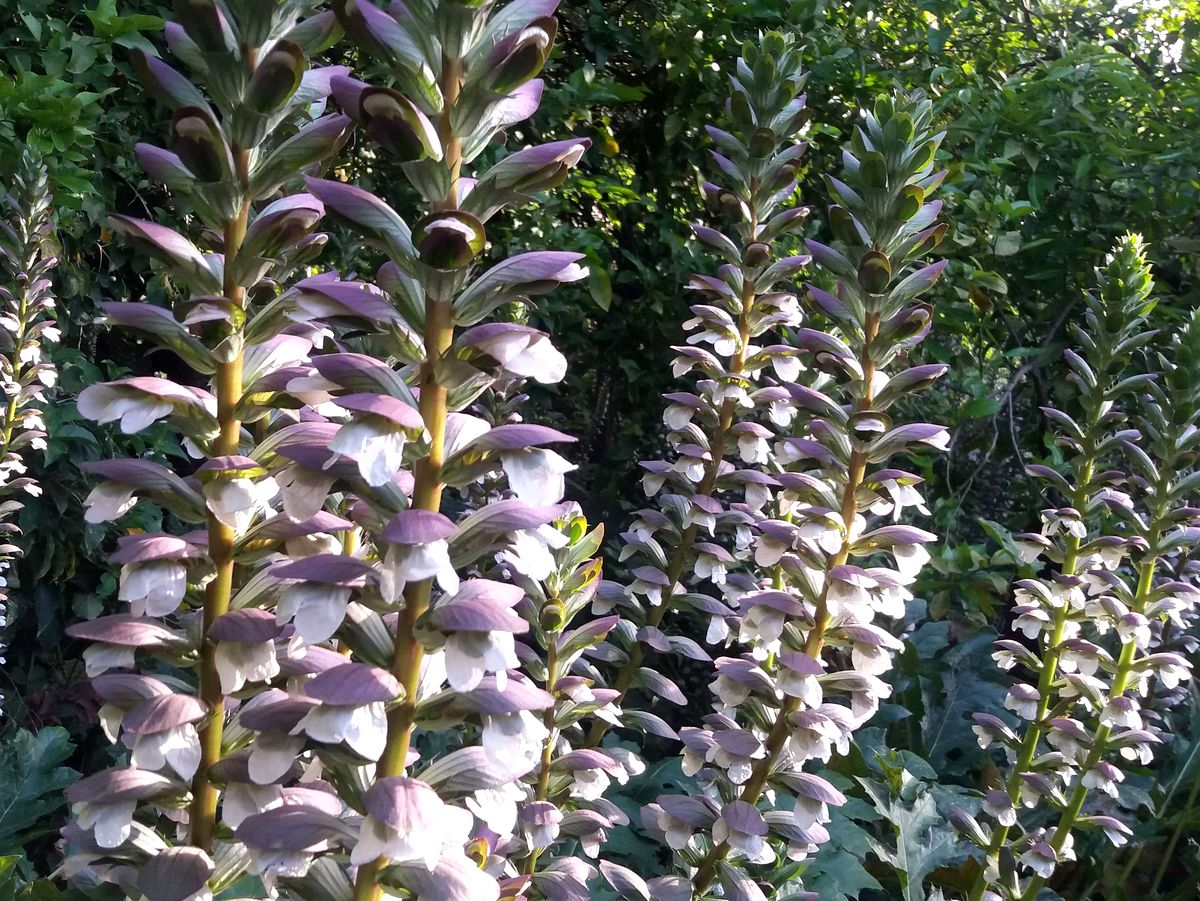Acanthus mollis
Scientific name: Acanthus mollis L
Family: Acantaceae
Common name: Bear's Breeches, Oyster Plant
It may be the most widely used plant in all artistic disciplines, as it has inspired architects, sculptors and painters since ancient times; it is characteristic of Corinthian columns, we can find it decorating sculptural ensembles or mosaics from ancient Greece, Roman, Gothic, Islamic, Renaissance and Baroque culture. In classical Greece it had a symbolism of immortality.
Bear's Breeches is a herbaceous plant with an imposing appearance. It is a perennial, with an abundant and long-lasting flowering from spring to summer; after flowering, the leaves wither and should be cut off. Once established in an area, it will grow wild; it spreads easily to form large masses, making it an impressive sight to see covering shady spaces under trees in parks and gardens. Its leaves are large (up to almost a metre long), lobed and wavy, and deep dark green in colour. At the end of April it begins to flower, from the centre of the rosette of basal leaves emerges an erect spike 1.5 metres high covered with white flowers, with a violet upper bract and other spiky ones. The fruits are leathery pods that open with a bang to disperse their seeds; this loud explosion may surprise an absent-minded passer-by.
It is naturally distributed throughout the central and eastern Mediterranean area, although it has naturalised in many places as it has been cultivated since ancient times as an ornamental. Acanthus is a word of Greek origin referring to the fact that it is a thorny plant; however, the name of the species is Latin and means soft or flexible, which alludes to its leaves. It has some medicinal properties, mainly as an anti-inflammatory; its flowering stems can be used in decoration as a dried plant, but great care must be taken with its prickly thorns. It can be seen on the stairs leading up from the La Concepción staff car park.

